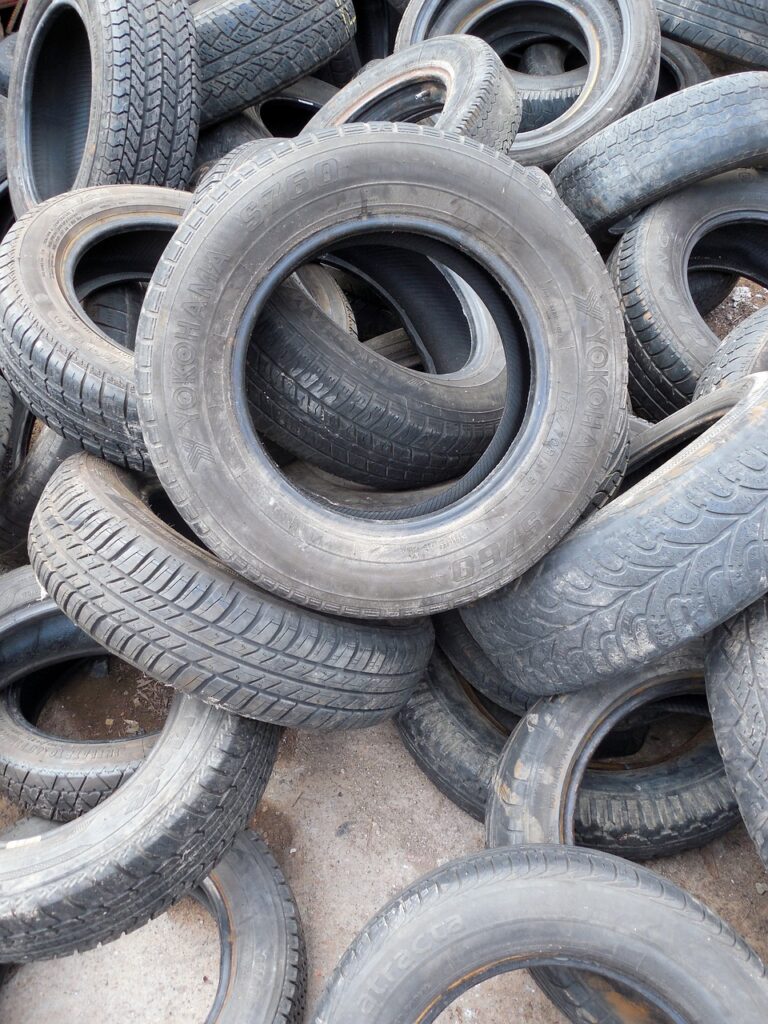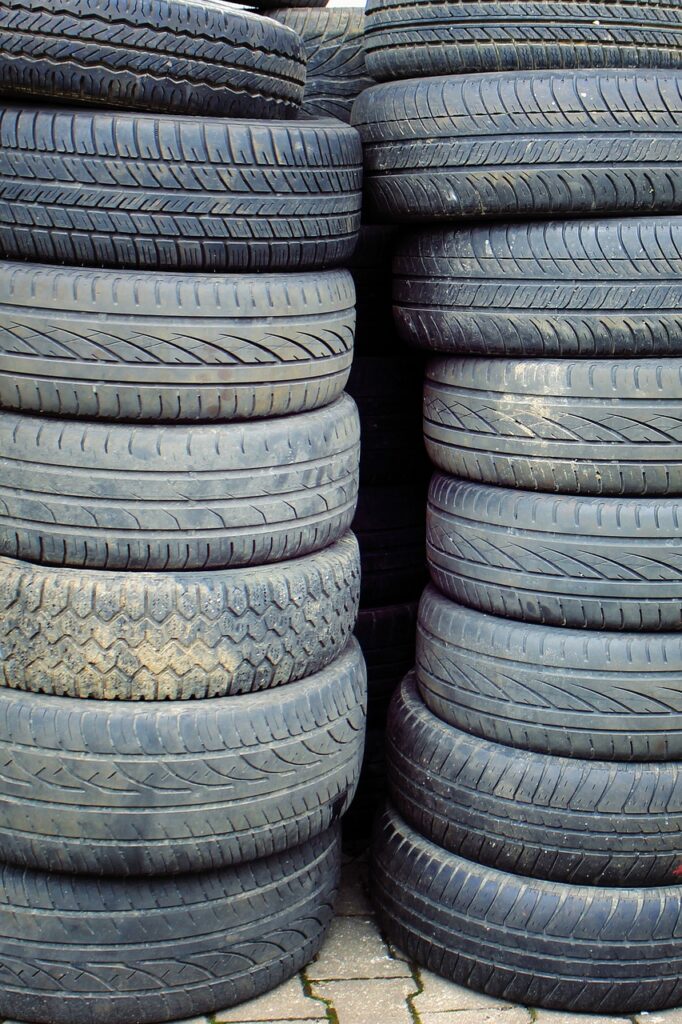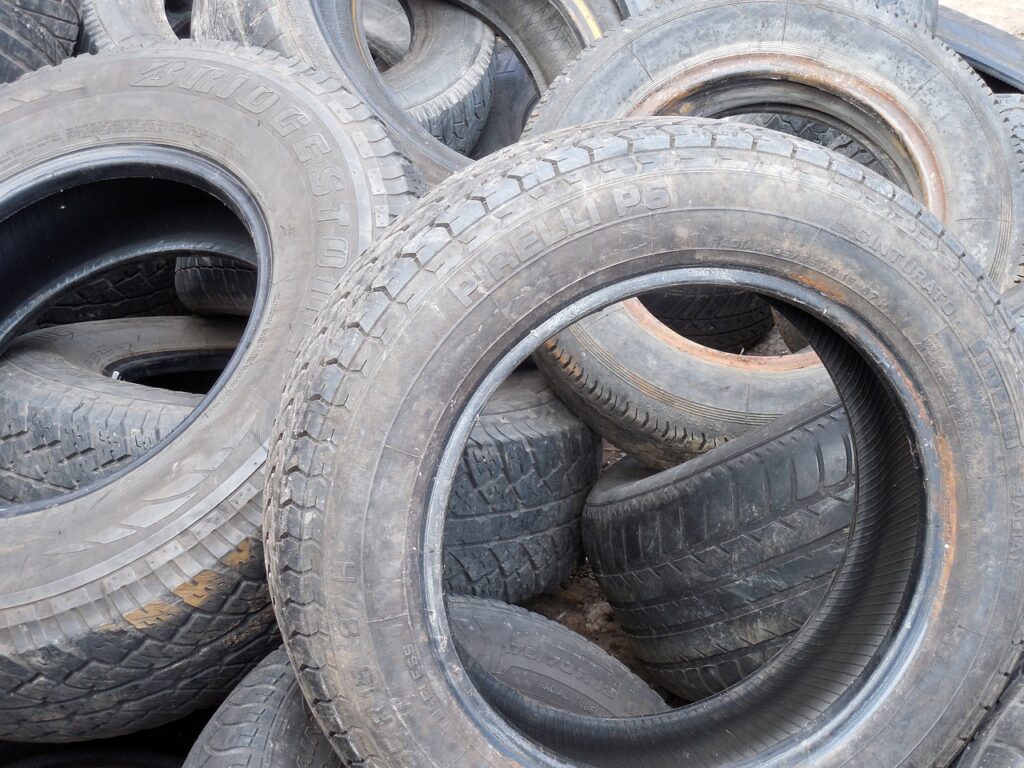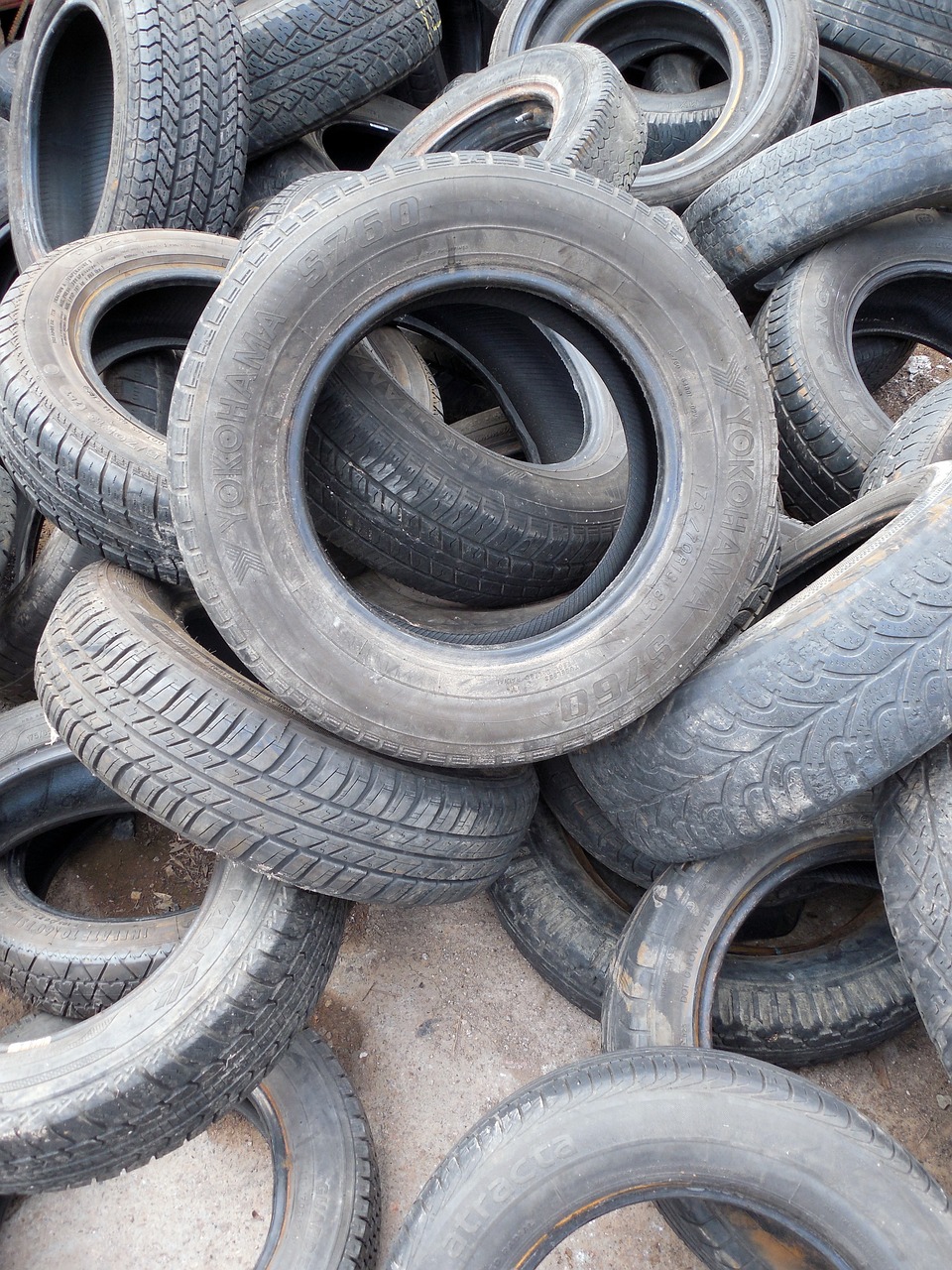Are you unsure about how to properly store your tires? Look no further! In this article, we will outline the recommended tire storage procedure to ensure the longevity and performance of your tires. Whether you’re storing them for a season or longer, these guidelines will help you keep your tires in optimal condition for when you need them. So, let’s get started and make sure you’re storing your tires the right way!

Choosing the Right Storage Area
Temperature Control
When it comes to storing your tires, maintaining the right temperature is crucial. Extreme heat or cold can cause significant damage to your tires and decrease their lifespan. It is recommended to store your tires in an area with a stable temperature, ideally between 32°F (0°C) and 86°F (30°C). This will prevent the rubber from hardening in cold temperatures or deteriorating in high temperatures.
Humidity Control
In addition to temperature, humidity control is also essential for tire storage. High levels of humidity can promote the growth of mold and mildew on the tires, while low humidity can cause the rubber to dry out and crack. It is advisable to store your tires in a location with a humidity level between 40% and 60%. To maintain the desired humidity level, you can use dehumidifiers or humidifiers, depending on your specific needs.
Protection from Sunlight
Sunlight can cause the rubber in your tires to deteriorate over time. The ultraviolet (UV) rays from the sun can break down the chemical bonds in the rubber, leading to cracking and weakening of the tire structure. To protect your tires from sunlight damage, it is best to store them in a dark or dimly lit area, away from direct sunlight exposure. This will help prolong the life of your tires and maintain their overall quality.
Clean and Dry Environment
Before storing your tires, ensure that the storage area is clean and free from any dirt, debris, or moisture. Any foreign particles present on the tires can cause damage or corrosion, especially over an extended period. It is recommended to sweep or vacuum the storage area and wipe down any surfaces to create a clean and dry environment for your tires. This will help preserve their condition and prevent any unnecessary damage.
Preparing the Tires for Storage
Inspecting the Tires
Before storing your tires, it is crucial to inspect them thoroughly for any signs of damage, such as punctures, bulges, or uneven wear. If you notice any issues, it is best to address them before storage. In case of severe damage, it may be necessary to replace the tire altogether. By inspecting your tires before storage, you can ensure that you are not storing damaged tires that may become a safety hazard or compromise their performance.
Cleaning the Tires
Cleaning your tires before storage is essential to remove any dirt, grime, or road debris that may have accumulated on the surface. You can use mild soap or tire-specific cleaners along with a soft brush or sponge to clean the tires thoroughly. Avoid using harsh chemicals or abrasive materials that could damage the rubber. Once cleaned, allow the tires to dry completely to prevent moisture build-up during storage.
Removing Excess Air
It is recommended to remove excess air from your tires before storage. Overinflated tires can put unnecessary pressure on the rubber, leading to deformation or even a blowout. Use a tire pressure gauge to check the current air pressure and adjust it to the manufacturer’s recommended levels. By releasing excess air, you can prevent any potential damage during storage and maintain the proper shape of the tires.
Marking the Tires
To keep track of tire rotation or specific storage details, consider marking your tires before storing them. This can be done using colored chalk, stickers, or permanent markers. Marking the tires with relevant information such as the position (front or rear), the date of storage, or any specific notes can help you maintain a systematic approach to tire storage. It will ensure that you reinstall the tires correctly and take appropriate action based on the storage duration.
Proper Tire Stacking
Positioning the Tires
When stacking tires, it is important to position them correctly to avoid unnecessary stress on the sidewalls. The recommended method is to stack the tires vertically, one on top of the other. This vertical positioning helps distribute the weight evenly across the sidewalls, minimizing the risk of deformities or damage. Avoid stacking tires horizontally, as this can lead to sidewall collapse or distortion over time.
Using Tire Racks or Tire Stands
To further ensure proper tire stacking, consider using tire racks or tire stands. These storage solutions provide support and prevent tires from touching each other or the ground. Tire racks or stands can be easily purchased or constructed, and they help maintain the shape and integrity of the tires during storage. They also make it easier to access the tires individually without disturbing the rest of the stack.
Avoiding Direct Contact
When stacking tires, it is essential to avoid direct contact between the sidewalls of different tires. Direct contact can lead to rubbing, friction, and potential wear or damage to the rubber. To prevent this, consider using a protective barrier such as cardboard or rubber mats between the tires. This will create a cushioning effect and minimize the risk of abrasion or deterioration.
Rotating Tires Regularly
To prevent flat spots or uneven wear during extended periods of storage, it is recommended to rotate the tires regularly. Every few months, take the time to change the position of the tires in the stack to distribute the weight evenly. This rotation will help maintain the shape of the tires and prevent any long-term damage caused by extended pressure on specific areas. Additionally, rotating the tires will also reduce the chances of developing flat spots.
Tire Storage Tips
Covering the Tires
To provide an extra layer of protection for your tires, consider covering them during storage. Tire covers or plastic wrap can shield the tires from dust, moisture, and UV rays. Ensure that the covers fit securely and do not trap moisture inside, as this can cause mold or mildew. Keep in mind that covering the tires is especially important if you are storing them in an area with higher humidity levels or significant sunlight exposure.
Avoiding Petroleum-Based Products
When it comes to tire storage, it is important to avoid using petroleum-based products such as tire dressings or protectants. While these products may enhance the appearance of the tires temporarily, they can cause rubber degradation and affect tire performance over time. Stick to mild soap or tire-specific cleaners for cleaning purposes, and avoid using any unnecessary chemicals or products that can potentially harm the tires.
Checking Tire Pressure Regularly
Even during storage, it is crucial to check the tire pressure regularly. Over time, tires can lose air due to natural permeation or temperature fluctuations. Use a tire pressure gauge to measure the air pressure and ensure that it is within the manufacturer’s recommended range. If necessary, adjust the air pressure accordingly. By maintaining the proper tire pressure, you can prevent damage and ensure that the tires are ready for reinstallation when needed.
Avoiding Weight Load
When storing tires, it is important to avoid placing any heavy objects on top of them. Excessive weight or pressure can cause the tires to deform, develop flat spots, or even lose their shape permanently. To maintain the integrity of the tires, store them in an area where there is no risk of heavy objects falling on them or placing additional weight on top of the stack.
Storing Tires on Their Sides
If you have limited space or need to store a large number of tires, storing them on their sides can be an efficient solution. When storing tires vertically, make sure to stack them securely and use a tire rack or stand to support the weight. By storing tires on their sides, you can save space while still ensuring proper storage conditions. Just make sure to rotate the position of the tires periodically to avoid excessive deformation.

Long-Term Storage Considerations
Using Tire Bags
For long-term tire storage, consider investing in tire bags or tire totes. These specially designed bags provide an added layer of protection against dust, moisture, and UV rays. Tire bags are typically made of durable materials and have handles for easy handling and transportation. By storing your tires in dedicated bags, you can ensure that they are well-protected and ready for use whenever you need them.
Tire Rotation
During long-term storage, it is essential to rotate the position of the tires regularly. Every six months, take the time to change the stacking order or flip the tires to prevent flat spots and uneven wear. By rotating the tires, you distribute the weight and prevent the tires from developing weak areas due to prolonged pressure. This simple step can significantly extend the lifespan of your tires and maintain their performance.
Avoiding Extreme Temperatures
Extreme temperatures can have a detrimental effect on tire storage. Avoid storing tires in areas that are subject to extreme heat or cold, such as attics, basements, or outdoor sheds. Rapid temperature fluctuations can cause the rubber to expand and contract, potentially leading to cracks or other forms of damage. Opt for a storage area with a stable temperature to ensure the longevity and quality of your tires.
Inspecting Stored Tires Periodically
Even during long-term storage, it is important to inspect your tires periodically. Take the time to check for any signs of damage, including cracks, bulges, or sidewall deformities. If you notice any issues, it is best to address them promptly. Inspecting stored tires will help you identify potential problems before they worsen and ensure that your tires remain safe and roadworthy when it’s time to reinstall them.
Preparing Tires for Reinstallation
Cleaning the Tires
Before reinstallation, it is essential to clean the tires once again. Even if the tires were stored in pristine conditions, dust or dirt may have accumulated during storage. Use mild soap or tire-specific cleaners and a soft brush or sponge to clean the tires thoroughly. Rinse them with water and allow them to dry completely before reinstalling them on your vehicle. Clean tires not only enhance the appearance but also help ensure optimal performance.
Checking for Damages
Before reinstalling the tires, carefully inspect them for any signs of damage or deterioration. Look for tread wear, sidewall cracks, bulges, or any other visible issues. If you notice any damages that cannot be repaired or pose a safety risk, it is best to replace the tires. Safety should always be a priority, and installing damaged or compromised tires can put you and others on the road at risk.
Matching Tires for Uniformity
When reinstalling tires, it is important to match them for uniformity. If you previously rotated the tires or stored them in different positions, ensure that each tire is paired with its corresponding counterpart. Matching tires based on their previous alignment will help maintain balance, handling, and overall performance. It is also advisable to install all four tires from the same set if you have stored multiple sets to ensure consistency.
Checking the Tread Depth
Before reinstallation, measure the tread depth of your tires. Tires with insufficient tread depth can compromise traction, especially in wet or slippery conditions. The minimum tread depth requirement varies depending on your local regulations, but it is generally recommended to have at least 2/32 of an inch (1.6 mm) of tread depth. If your tires have worn down beyond this limit, it is time to replace them to ensure safe driving.

Importance of Proper Tire Storage
Extending Tire Lifespan
Proper tire storage is crucial for extending the lifespan of your tires. By maintaining the ideal storage conditions – including temperature control, humidity control, and protection from sunlight – you can prevent premature aging, cracking, and other forms of damage. Storing your tires correctly will help them retain their original quality and ensure that they are in optimal condition when you need to reinstall them.
Ensuring Optimal Performance
Tires that have been stored properly are more likely to deliver optimal performance. When tires are stored in the right conditions, their structural integrity is preserved, maintaining their shape, flexibility, and overall quality. Properly stored tires can provide better traction, improved fuel efficiency, and a smoother ride. By investing some time and effort into tire storage, you can enjoy the full performance potential of your tires.
Safety and Roadworthiness
Safety should always be a priority when it comes to your tires. Proper storage ensures that your tires remain safe and roadworthy, free from damage that could potentially lead to blowouts or loss of control while driving. By following the recommended tire storage procedures, you minimize the risk of unexpected tire failures and ensure your safety, as well as the safety of others on the road.
The Consequences of Improper Tire Storage
Decreased Tire Lifespan
Improper tire storage can significantly decrease the lifespan of your tires. Exposure to extreme temperatures, high humidity, direct sunlight, or contact with harsh chemicals can lead to accelerated deterioration. Improper stacking or lack of rotation can cause flat spots or uneven wear. Neglecting proper inspection or cleaning before storage can result in unnoticed damages that worsen over time. All of these factors can shorten the lifespan of your tires and result in costly replacements.
Compromised Performance
Tires that have been improperly stored are more likely to show compromised performance. Cracked or deformed tires will have reduced traction, affecting braking, handling, and stability on the road. Tires with uneven wear or flat spots may produce vibrations and noise, leading to a less comfortable driving experience. When tires are not stored correctly, their overall performance is compromised, impacting your driving safety and satisfaction.
Safety Hazards
Improperly stored tires can pose significant safety hazards on the road. Cracked, aged, or damaged tires are more susceptible to blowouts, sudden deflations, or tread separations. These tire failures can result in loss of control, accidents, or even fatalities. Additionally, tires with compromised performance due to improper storage may have reduced grip, especially in hazardous road conditions. Ensuring proper tire storage is crucial for preventing potential safety hazards and protecting yourself and others on the road.

Commercial Tire Storage Services
Benefits of Professional Storage Services
If you prefer to leave tire storage in the hands of experts, commercial tire storage services can provide several advantages. These services offer specialized storage facilities with optimal temperature and humidity control, protecting your tires from the elements. Professional storage services often include regular inspections, cleaning, and rotation to ensure the best tire condition. By opting for commercial storage, you can save space, time, and additional expenses associated with maintaining your own tire storage area.
Choosing a Reliable Service Provider
When selecting a commercial tire storage service provider, it is essential to choose a reliable and reputable company. Research different providers in your area, read reviews, and consider their experience in the industry. Ensure that the storage facilities meet the recommended storage conditions and that the company has proper security measures in place. Additionally, inquire about any additional services offered, such as tire maintenance, tire installation, or tire disposal, to further enhance the convenience and value of their services.
Conclusion
Proper tire storage is crucial for maintaining tire quality, extending their lifespan, and ensuring optimal performance and safety on the road. By following the recommended tire storage procedures, such as temperature and humidity control, cleanliness, and proper stacking, you can protect your tires from premature aging, damage, and potential safety hazards. Take the time to prepare your tires for storage, inspect them periodically, and clean them before reinstallation. Whether you choose to store your tires in your own designated area or rely on commercial storage services, the effort put into proper tire storage is well worth the benefits of prolonged tire lifespan, enhanced performance, and peace of mind.


